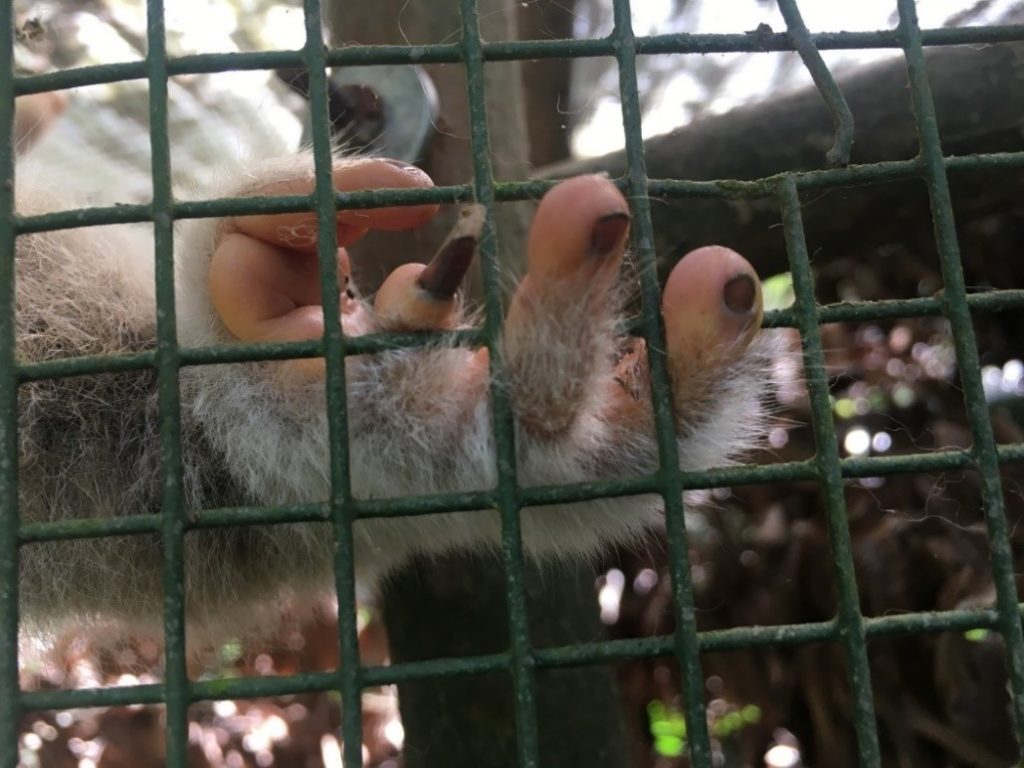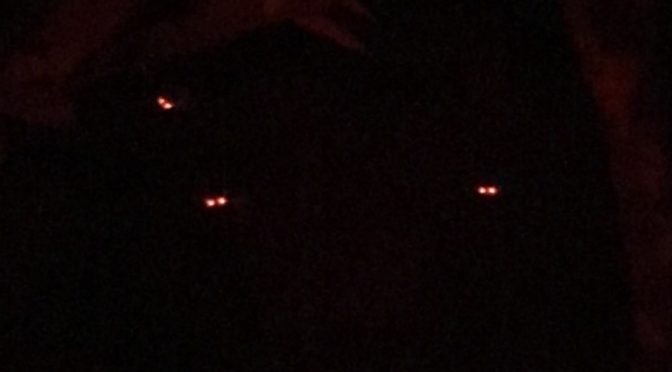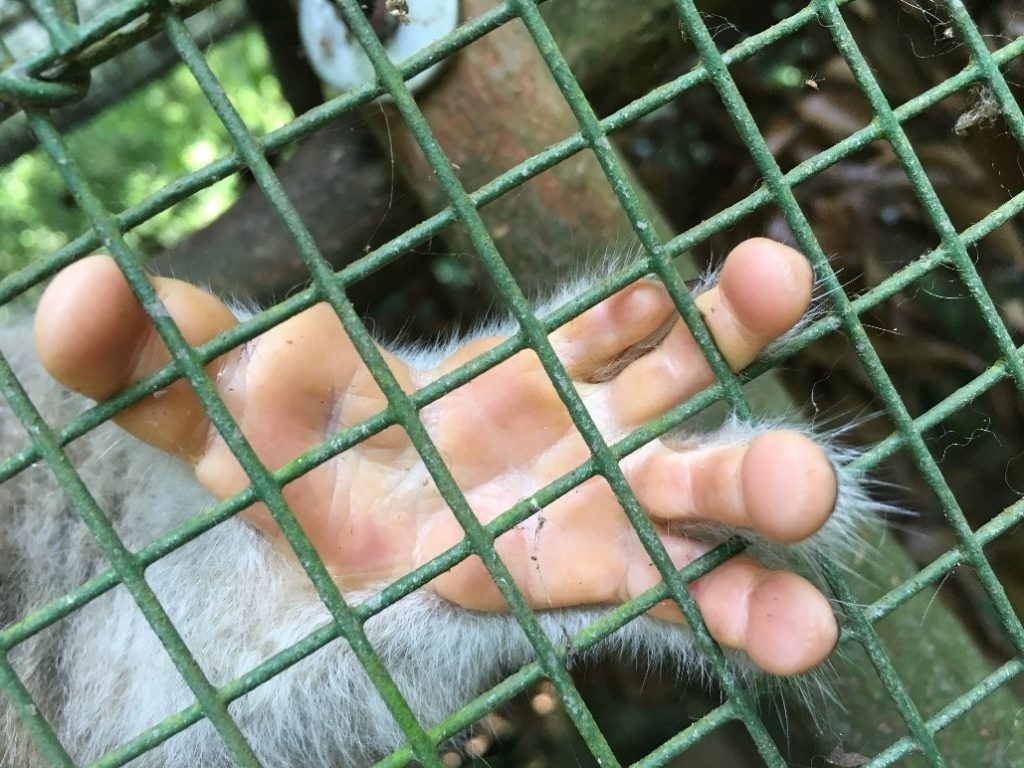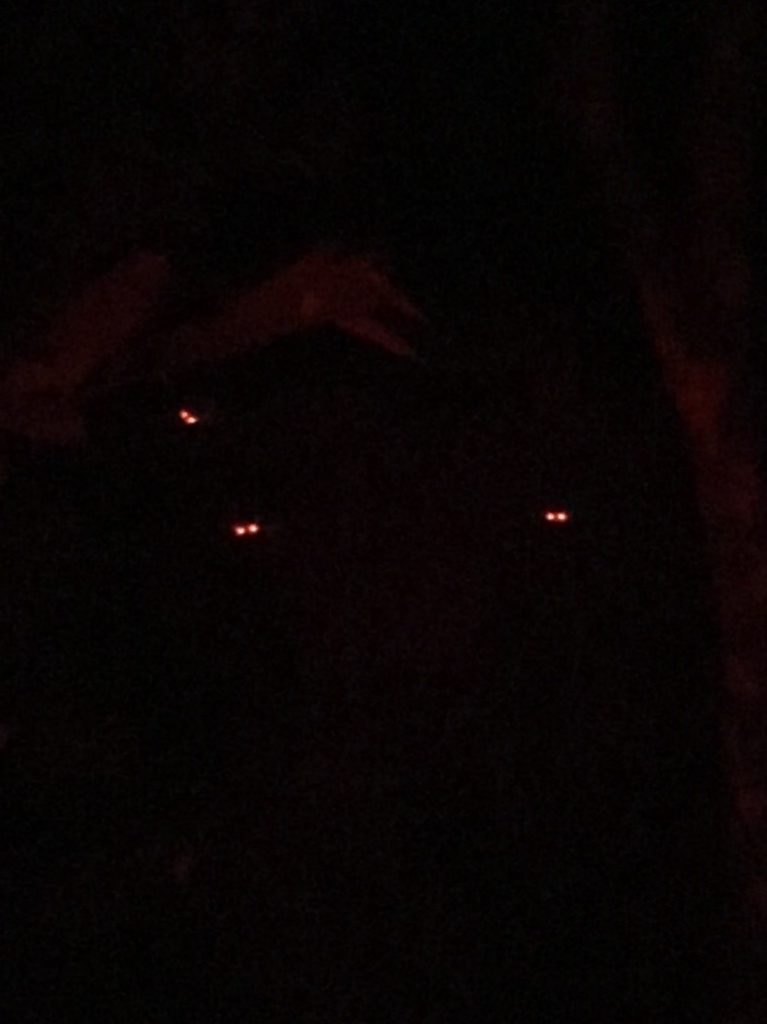
The Bengal slow lorises housed together at the Endangered Primate Rescue Center look at me as I shine a red light at them. I think if I was in the forest at night and had no idea what a slow loris was, I’d be pretty freaked out seeing these glowing eyes!
Tapetum lucidum
I missed last week’s Culi Tuesday update partly because of exhaustion after over six weeks in Cuc Phuong. I’m always in awe of the amazing keepers here at the Endangered Primate Rescue Center and how they work so hard every day with the sweltering Vietnam humidity. I’m starting to think the slow loris has the right idea by not being active until the sun sets and it’s become cooler! Maybe if I had tapetum lucidum, I would be nocturnal, too, to avoid this heat. Slow lorises (and many other animals, like cats and dogs) have an extra layer of tissue in the back of their eye, behind their retina, called the tapetum lucidum. In simple terms, this extra later of tissue reflects the light that enters the pupil so that it hits the light detecting-cells of the eye two times. This helps enhance nocturnal vision when there are low levels of light and creates a distinctive eyeshine when a light is pointed at their eyes. Look at the, in my opinion, slightly creepy red glow of the three Bengal slow lorises in the picture below!
Sublingua
A second cool anatomical feature of slow lorises is their second tongue, called the sublingua! It lies below their main tongue and is thin, pointy, and almost white. It’s used to clean their toothcomb which is a row of bottom teeth used for gouging into tree bark. It can be difficult to see, but you can get a good peak at it sometimes if they stick their main tongue out to lick something.
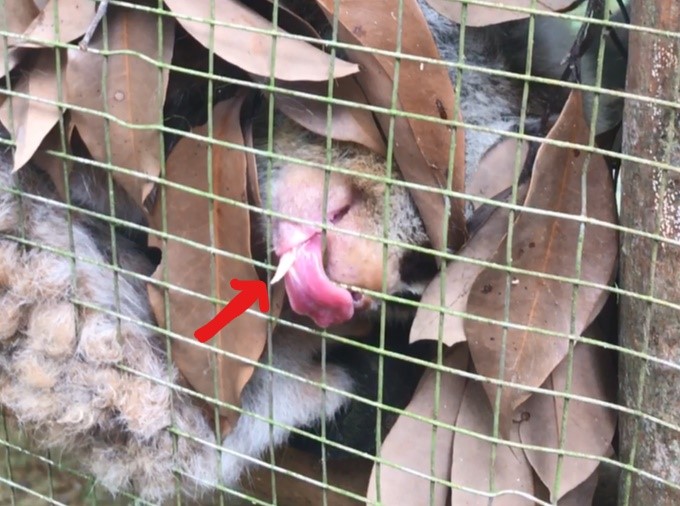
Grooming claw
The third and final interesting anatomical feature of slow loris I will talk about is their hands and feet! Slow lorises have short index digits on their hands and feet, and, to many people’s surprise when I slow them the lorises at the EPRC, they have nails on most of their fingers and toes, too. Their second toe on each foot, however, has one long grooming claw, also called a toiled claw. As can be guessed by its name, it’s a special claw for cleaning themselves. The aspect I find most interesting, though, is the fact their thumbs are practically 180 degrees away from their other four fingers and twice the width. As arboreal animals that are unable to jump, these hands and fingers provide a strong grip for them to hold on tightly as the walk about the tall trees easily 8 meters or more above the ground. They also need a strong grip for stability when they are sleeping that high!
